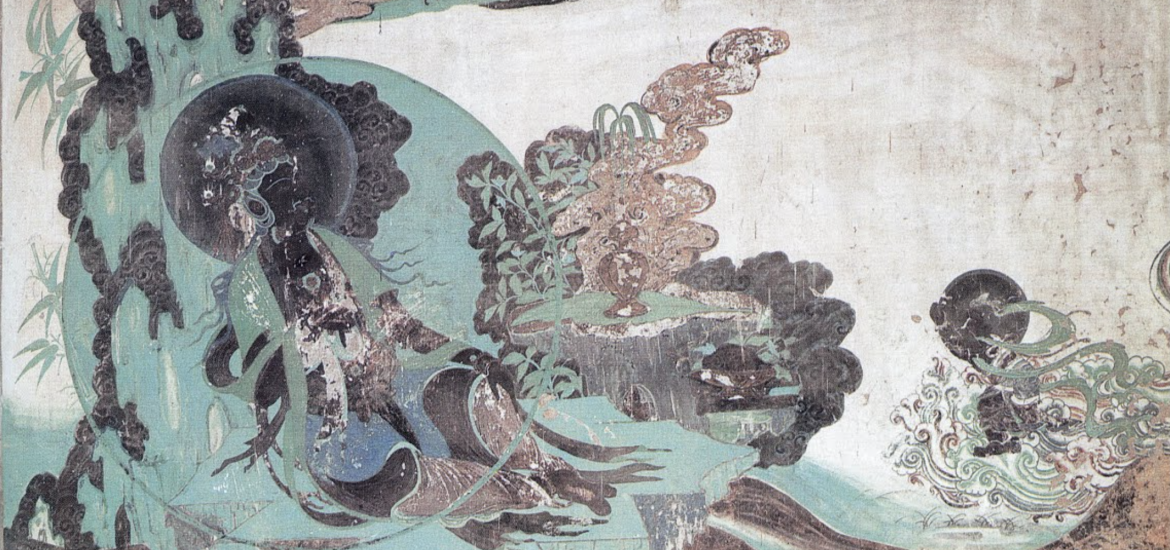A Hidden, Intangible Thread?
It was the 22nd of April. We were in Cave 2 of the Yulin Grottoes in Guazhou County, gazing up at the tranquil yet majestic face that inspired artist and creator Rebecca Wong to paint one of her most ambitious pieces yet. We were offering her replica of the “Water Moon Guanyin” to the original mural, to be “consecrated.” This Water Moon Guanyin had also been famously painted by Zhang Daqian (1899–1983) in 1943. Almost exactly five months later, on 19 September, she drew my attention to renewed interest on WeChat about a wooden Guanyin image carved in the exact same theme and pose as the Water Moon Guanyin of Yulin.
Bonhams stated that this piece of religious art, a beautiful figure over a meter high, was crafted sometime during the Jin Dynasty, between the 12th and 13th centuries. A piece of exquisite rarity was thought long lost, it had been last owned by a Parisian family since the 1930s before it was rediscovered in their home and offered up for sale. It was sold by Bonhams at an auction in Paris on 13 June and fetched 1 million euros, or US$1.1 million.
The “blue” art of bodhisattvas of the Yulin Caves, including the Water Moon Guanyin, are broadly agreed to have been painted by Tangut artists, or at least painters working for the Western Xia (1038–1227). The Tanguts’ state religion was famously esoteric Buddhism. This Buddhist imperial dynasty’s dates align very well with the creation of the Parisian Guanyin sold by Bonhams. And to add a further twist, the Parisian Guanyin was made out of material that is visually identical (along with similar themes) to the Guanyin at Louvre Abu Dhabi, which Rebecca and I had visited in August. As museum director Manuel Rabaté noted, this Seated Avalokiteshvara can be dated to the years 1050–1150: dates that overlap, at least partially, with the period of the Tangut Empire.
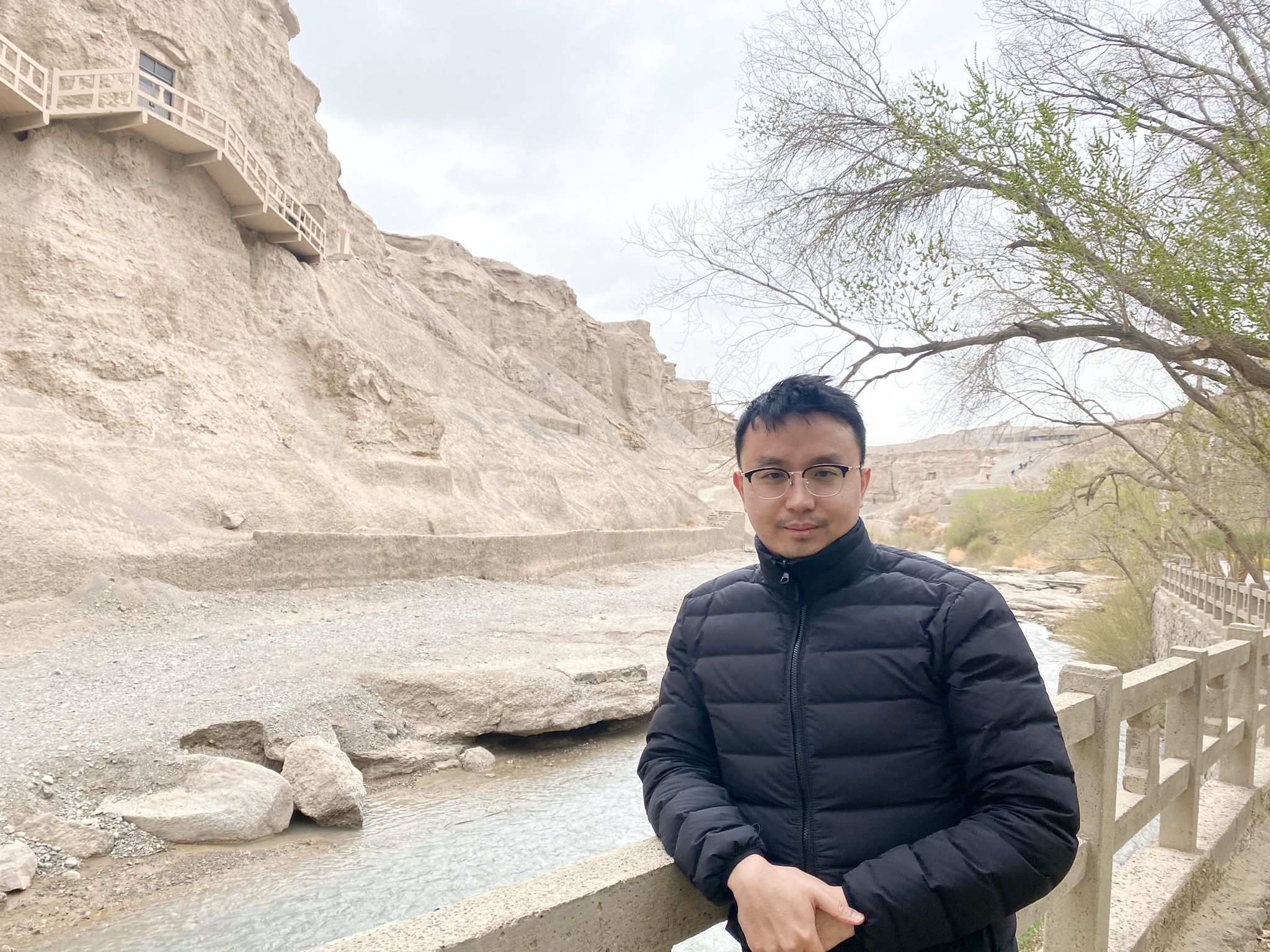
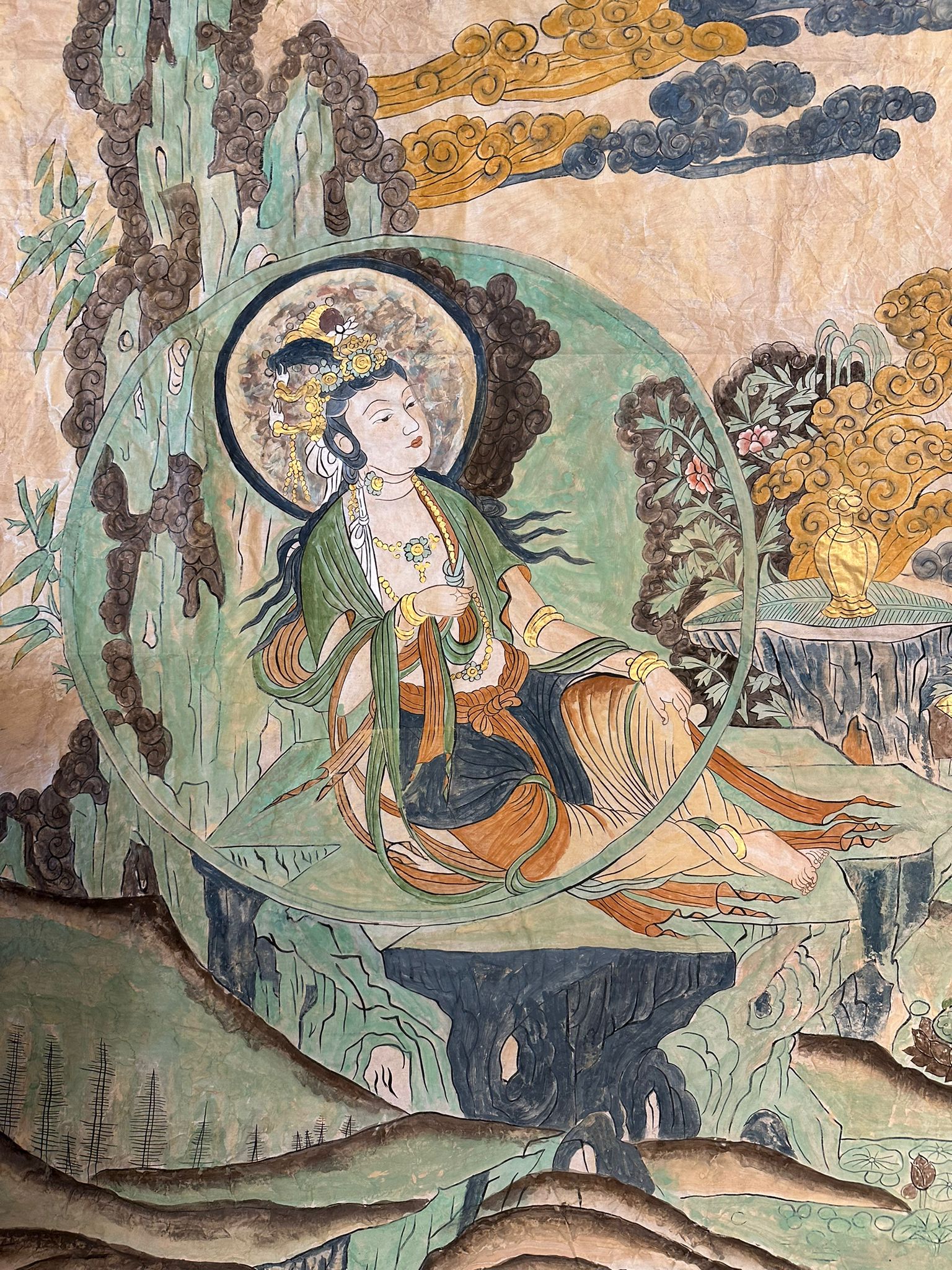
To delve deeper into the artistic “ecology” of Water Moon Guanyin, we should examine its origins. Among his 33 forms, Water Moon Guanyin one of the traditionally masculine that is depicted in a lalitasana pose, beside a pond or lake with the moon reflected in the water, with the moon in the water being a metaphor for illusion and insight into emptiness. This motif probably predates the Tang Dynasty (618 –907), since it was first mentioned in the Avatamsaka Sutra, itself translated in 420 by Buddhabhadra.
The Water Moon Guanyin that inspired Rebecca and I to take her replica painting to Yulin to be “blessed.” The Parisian Guanyin. And the Louvre Abu Dhabi Guanyin who is the director’s favorite. These three Guanyins were co-witnesses to a specific period of several centuries: that which K. J. Solonin describes as “a larger network of cultural exchange in North Asia prior to the Mongol invasion” (Solonin 2013, 43). There are many possible names for this period. Both the Northern (960–1127) and Southern Song (1127–1279) were but one Chinese player with the Jurchens, Khitans, and Tanguts. Yet it is possible and even likely they all mutually influenced one another, a classic example being the Jin’s inheritance of the Liao’s Buddhist infrastructure.
The states also shared another thing in common: being wiped out by Genghis Khan’s onslaught. It is no coincidence that the esoteric ecology of North Asia and China ends with the Mongols’ destruction of Liao-Song-Jin-Tangut esoteric Buddhism (why should the conquerors adopt the faiths of defeated rivals?) – and the khans look to Tibet’s schools for Dharmic legitimacy. To maximize geographical coverage and acknowledge this terminus in history, I therefore call the hunting grounds for our search for the lord of compassion “Pre-Genghis Esoteric North Asia.”
From Tang to Tangut: Early Signs of Guanyin’s Lunar Reflections
“He also manifests himself in the form of Water-moon Avalokiteshvara, sitting on a rock by the sea, gazing at the moon reflected in the water.”
The Ten Stages (The Stage of Good Wisdom), Avatamsaka Sutra
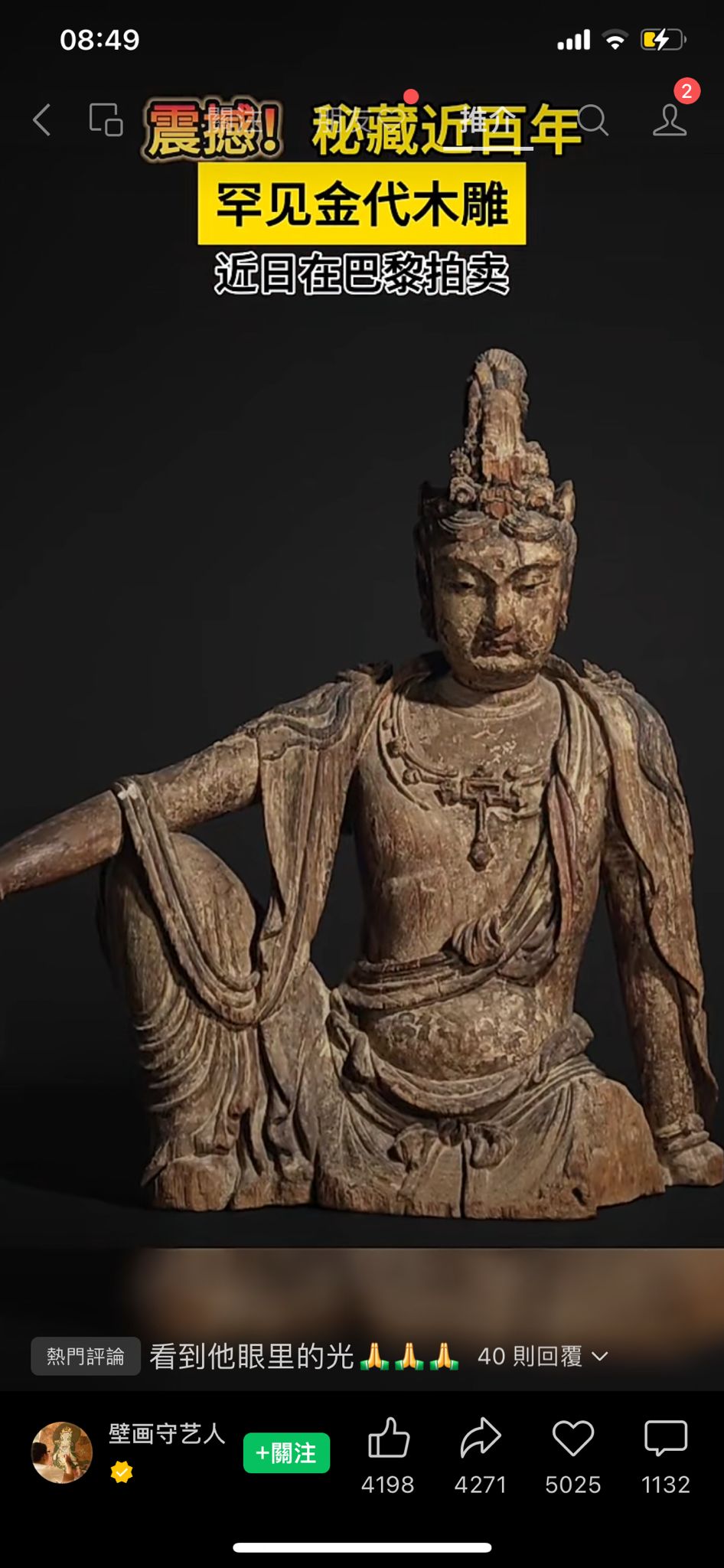
The Annals of Famous Painters of Successive Dynasties (Lidai minghua ji; 歷代名畫記) lists a Tang court painter, Zhou Fang (c. 730–805), as being the first to paint a Water Moon Guanyin. His dates overlap with those of Amoghavajra (不空) (705–74), the pre-eminent monk who dominated the imperial court of Chang’an, counselled three Tang emperors (Xuanzong, Suzong, and Daizong), and transmitted China’s first and foremost institution and lineage of esoteric Buddhism. His staggering accomplishments, made with his deep connections with Tang officials, nobility, and princes, led to what Geoffrey Goble called “Imperial Buddhism”: esoteric Buddhism devoted to the protection of the emperor and the destruction of his foes.
Is it so hard to imagine that Zhou Fang (courtesy name Zhonglang) might have known of Amoghavajra’s influence throughout the imperial court, and the power the monk wielded over the emperor? Could Zhou have, subconsciously or as a deliberate gesture to win favor, encoded the Water Moon Guanyin’s aesthetics and spiritual message (particularly the moon in the water) with esoteric meaning? Even if Zhou Fang did not personally meet Amoghavajra, it is said that the painter had Buddhist sympathies himself. It is difficult to know how many images of Water Moon Guanyin that he painted, although he not only practiced at Daci’en Temple in Chang’an, but painted a Water Moon Guanyin for the temple and many others in the Tang capital. His other paintings concerning Buddhist deities reflected the influence of esoteric Buddhism.
Is it possible to imagine that this connection between Guanyin and esoteric Buddhism permeated the later empires of Pre-Genghis Esoteric North Asia?
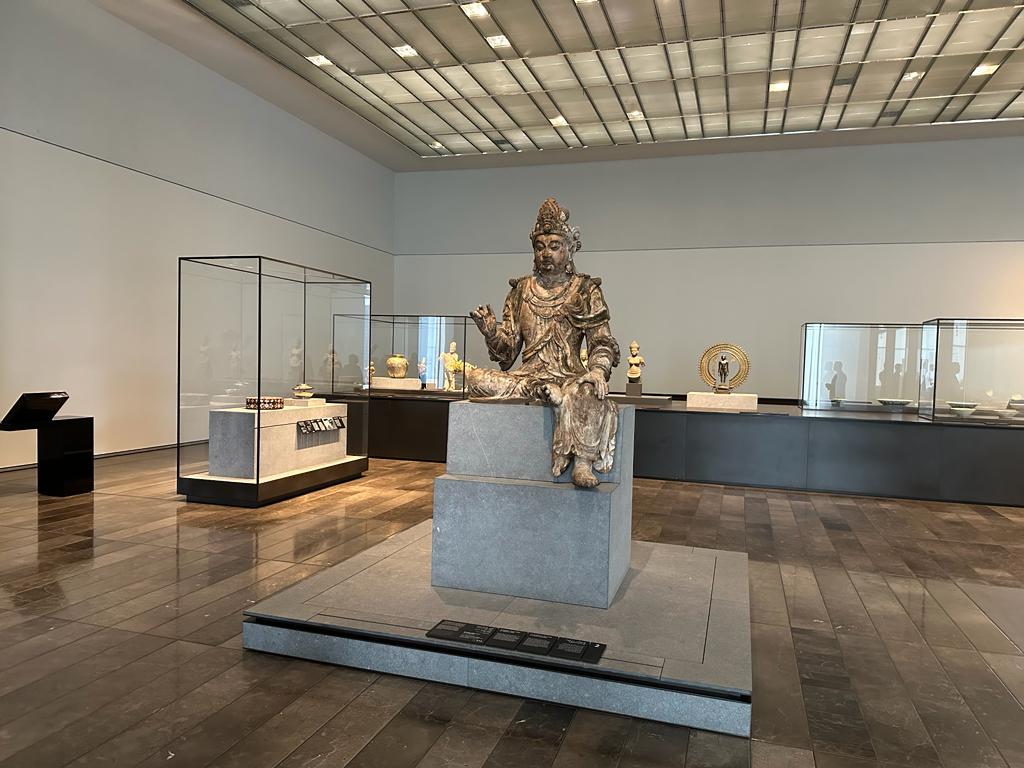
The Liao-Jin-Xixia-Song Ecosystem
The interregnum between the fall of the Tang and the establishment of the Song – the Five Dynasties and Ten Kingdoms period – lasted only 72 years. It is not unreasonable to speculate that Buddhist traditions, customs, and institutions carried on long enough to survive into the Song. This would have been despite its catastrophic fall from the giddy heights of supreme proximity to the dragon throne à la Amoghavajra.
If the Water Moon motif first appeared sometime in the 8th century, it could have stuck around long enough to diffuse into the religious cultures of the Khitans, Jurchens, Tanguts, and Song Chinese. They all adopted Buddhism to varying extents. This led to Guanyin’s motifs being replicated across different empires that found themselves at odds with another – across all of Pre-Genghis Esoteric North Asia. For example, one of the most famous Guanyin statues is a Liao polychrome Nanhai (Southern Sea) Guanyin, wood statue of Guanyin from Shanxi Province. It is currently displayed at the Nelson-Atkins Museum of Art. But it could also be Jin. His pose is clearly the Water Moon pose, matching another Water Moon Guanyin displayed at The Met in New York, attributed also to the Liao. Another seated Water Moon Guanyin at the Saint Louis Art Museum goes even further, attributing it to the Jin, Northern Song, or the Liao! This leads us to the Parisian Guanyin, which given its late provenance and its possible production under the Jurchens rather than the Khitans, was probably one of the last Guanyins to be made before Genghis unleashed his armies across North Asia and the Jin was overwhelmed by the Mongol forces.
Solonin describes the transmission of esoteric Buddhism as such: Khitans, as the earliest state in Pre-Genghis Esoteric North Asia, had a Buddhist tradition encompassing various traditions of Chinese Buddhism of the Tang and Five Dynasties period, including the practices of esoteric and Chan Buddhism. Not only was this Buddhism, heavily influenced by esoteric Buddhism as the “Perfect Teaching” (yuanjiao 圓教), but it was also integrated into a “complex system on the basis of the late Tang Huayan (my emphasis) teaching” (Solonin 2013, 172): in other words, esoteric Buddhism based on the Huayan jing/Avatamsaka Sutra in which the Water Moon Guanyin is first mentioned.
Critically, these Liao texts highlighting these influences were found at Khara-Khoto, and date to the late twelfth to the early thirteenth century: the location and period corresponding to the Western Xia’s dominion and eventual fall. Before knowing it, we have come full circle to Cave 2 of the Yulin Caves, the sanctum of the greatest Western Xia Water Moon Guanyin.
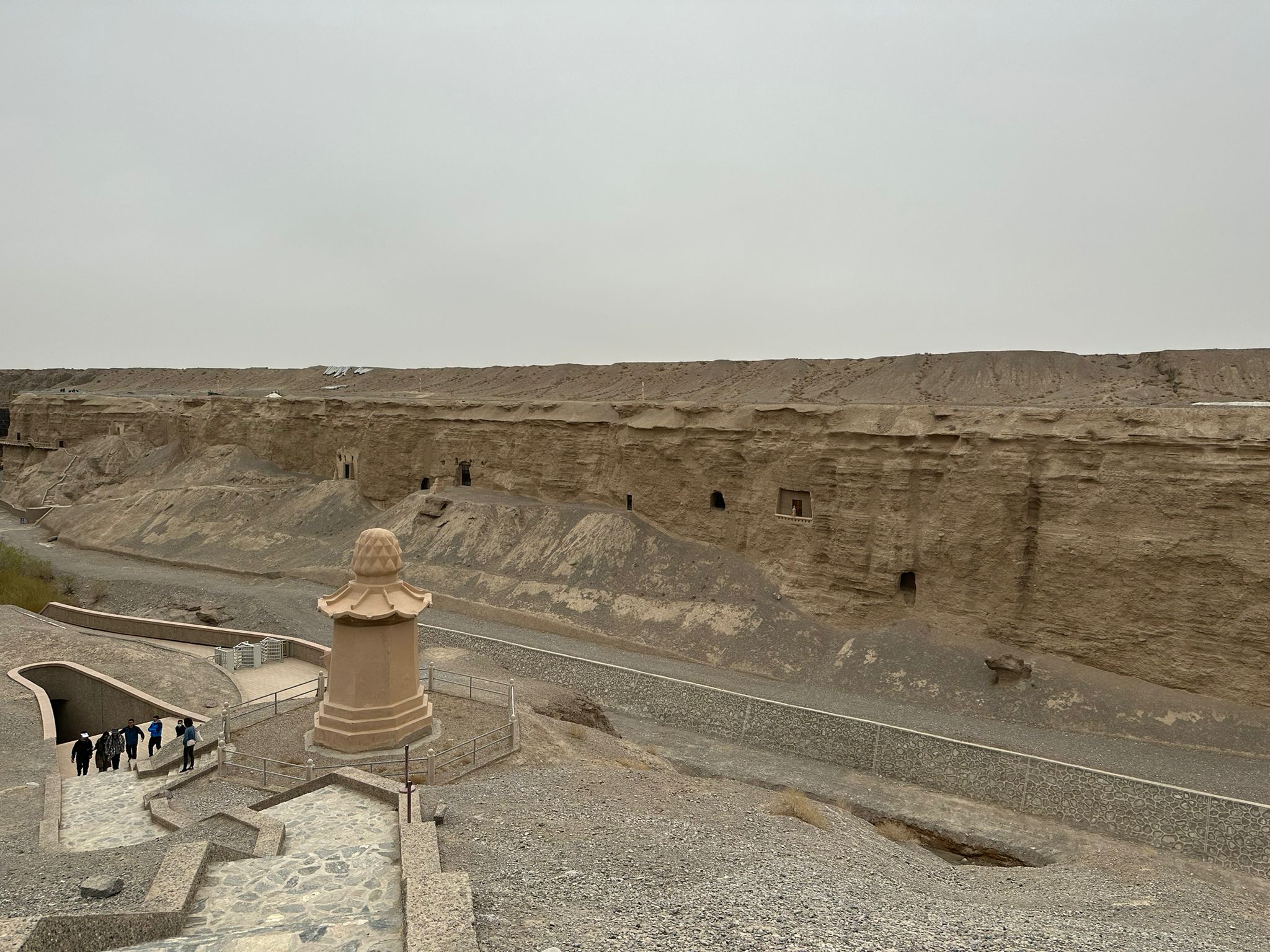
Dunhuang, Paris, Abu Dhabi: Guanyin is Everywhere
When we were at Dunhuang, Rebecca and I watched “Encore Dunhuang,” an epic show about the Silk Road’s history. In one part, the reviled Wang Yuanlu expresses remorse for selling the Buddhist texts of the Library Cave (Cave 17) to foreign buyers. An actress lavishly dressed as Guanyin then appears as a vision, reassuring him that she did not blame him for his actions, because she is in all places anyway. Despite the dubious history, the principle is certainly true: that the bodhisattva of compassion is everywhere.
If we wish to identify the footprints (perhaps the lake droplets?) of Water Moon Guanyin across Pre-Genghis Esoteric North Asia, it would seem almost fallacious to split the region into competing empires. She recognizes no imperial or national boundary. There is no textual, epigraphic, or archaeological evidence that connects, in a direct thread, the Water Moon Guanyin at Yulin to its Khitan, Jurchen, and Song counterparts. However, dates, locations, and events come together in a tantalizing thread that seem to connect intangibly the Water Moon Guanyin first mentioned in the Avatamsaka Sutra, to the Yulin mural repainted by Zhang Daqian and Rebecca. Whether we speak of this mural, or the Parisian Guanyin, or the Guanyin you can visit at Louvre Abu Dhabi, their serene faces all convey a knowing, reassuring smile.
What is Guanyin saying? Perhaps: “Not to worry, for I am everywhere.”
*
The Untold Lineage of Water Moon Guanyin (WMGY)
- 420: WMGY is first mentioned in the Avatamsaka Sutra’s Ten Stages chapter.
- 755–765: Amoghavajra dominates the Tang court and establishes imperial esoteric Buddhism.
- 766–805: Zhou Fang paints the first WMGY in Chang’an, and it begins to proliferate.
- 916: The Liao Dynasty inherits esoteric Buddhism, on the basis of late Tang Huayan teachings.
- 960; 1125: The Song Dynasty is founded; the Jin defeats the Liao and absorbs its Buddhism. Reverence of WMGY spreads across Pre-Genghis Esoteric North Asia.
- 1038: The Western Xia is established, and in the succeeding years absorbs the Khitan esoteric texts and begins work on the Yulin WMGY.
Timeline
WATER MOON GUANYIN STIRRINGS AT THE TANG COURT
705 – Amoghavajra is born.
730 – Zhou Fang is born.
755–765 – Amoghavajra establishes esoteric Buddhism for the emperor and is at the height of his power.
774 – Amoghavajra dies.
766–805 – Zhou Fang’s career flourishes at the Tang court until his death. The Water Moon Guanyin motif likely begins to be circulated around this time.
907 – The Tang Dynasty ends.
GUANYIN’S ESOTERIC REIGN
916 – The Liao Dynasty is established.
960 – The Northern Song is established.
1115 – The Jin Dynasty is established.
1038 – The Western Xia is established.
1125 – The Jin destroys the Liao.
1127 – The Song is defeated by the Jin and relocates from Kaifeng to Lin’an (modern Hangzhou).
THE END OF ESOTERIC NORTH ASIA
1206 – Temujin is proclaimed Genghis Khan, inaugurating the Mongol Empire.
1209–1212 – The Mongol Empire defeats the Western Xia, before destroying it completely.
1234 – The Mongols topple the Jin Dynasty.
1279 – The Mongols defeat the Southern Song, completing the Mongol conquest of China and ending the age of Pre-Genghis Esoteric North Asia.
Reference
J. Solonin. 2013. “Buddhist Connections between the Liao and Xixia: Preliminary Considerations” in Journal of Song-Yuan Studies Vol 43 (2023), 171-219.
Geoffrey C. Goble. 2019. Chinese Esoteric Buddhism: Amoghavajra, the Ruling Elite, and the Emergence of a Tradition. New York: Columbia University Press
See more
Guanyin of the Southern Seas (Nelson-Atkins Museum of Art)
Bodhisattva Avalokiteshvara in Water Moon Form (Shuiyue Guanyin) (The Met)
Seated Bodhisattva Avalokiteśvara (Guanyin) of Water-Moon Form (Saint Louis Art Museum)
Related features from BDG
Guanyin in the Desert: Louvre Abu Dhabi’s Director Manuel Rabaté on Universal Faith and Beauty
Related blog posts from BDG
Encore Dunhuang: A Contemporary Silk Road Show of Olympian Ambition


